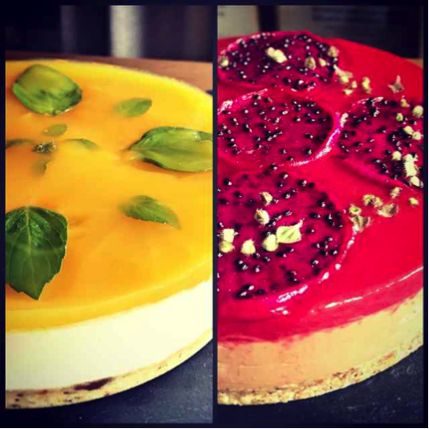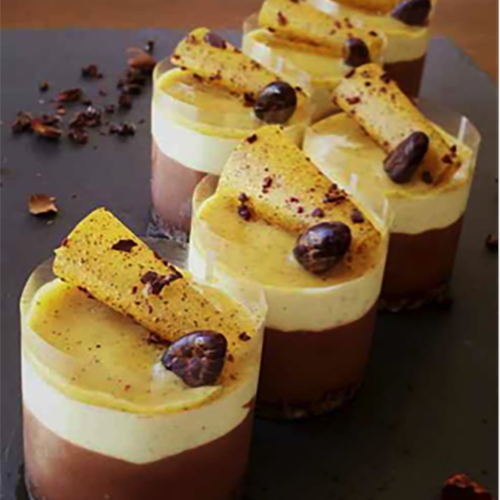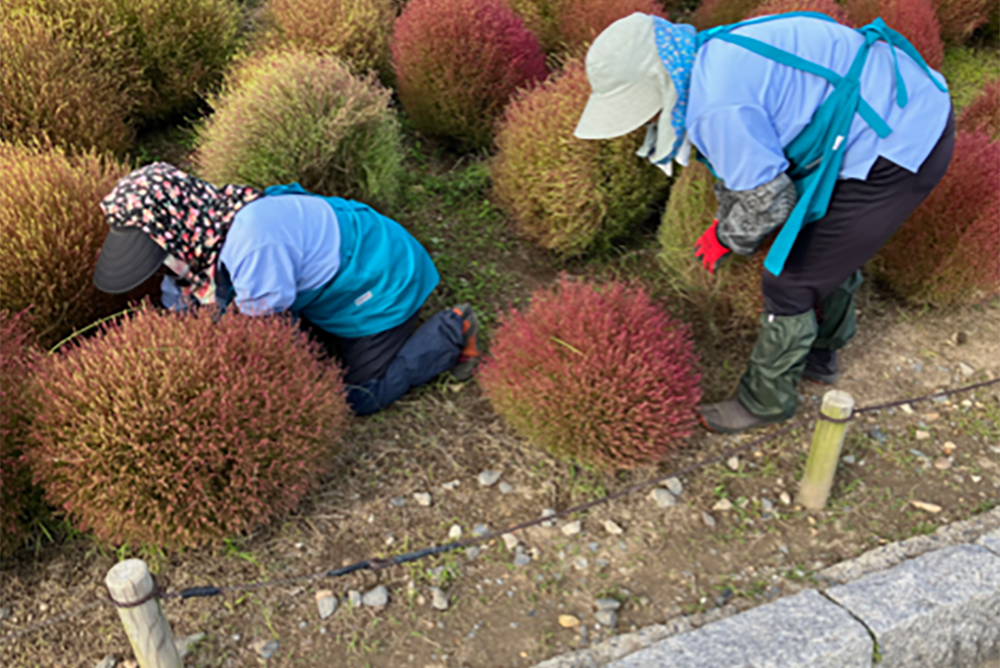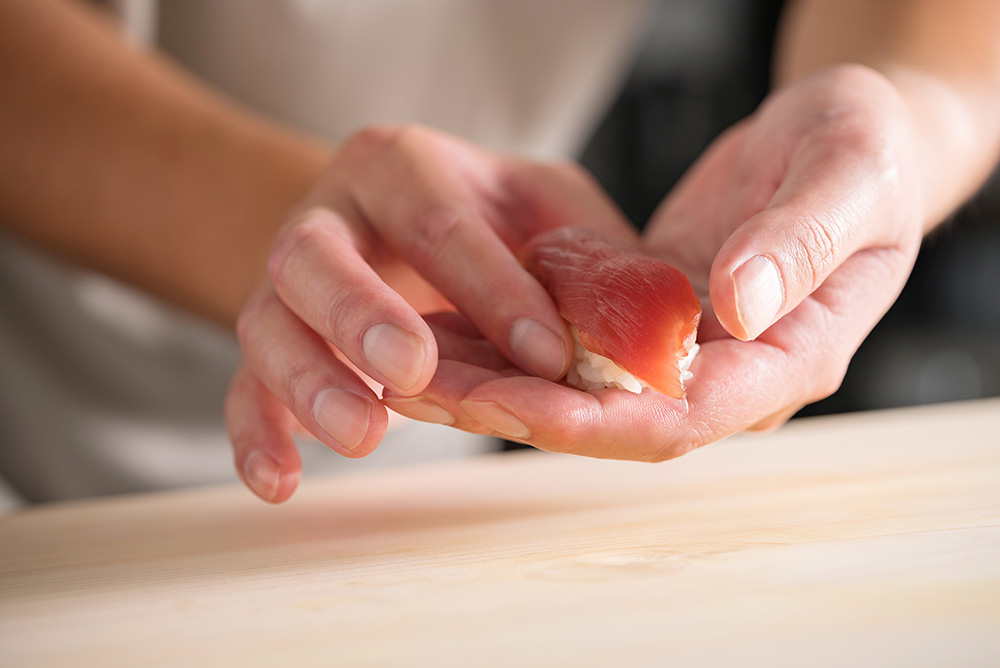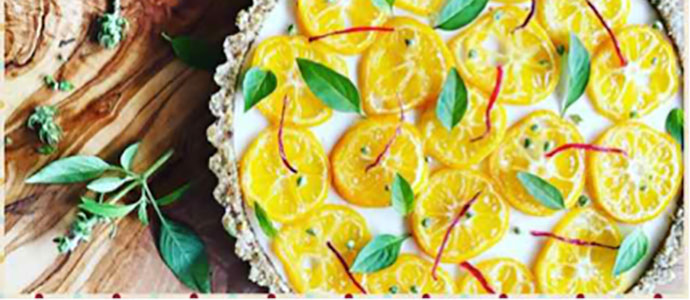

Perfectly Happy Foods
Raw Food Chef, Mimi SAIDA

I heard that you used to be in the IT industry before you started your career as a chef. Please tell us about yourself.
I used to work at an IT department of a major foreign affiliated company. First of all, I’ve always loved to eat. Besides, I enjoyed going to new restaurants, organizing parties, and sereving people food. So I decided to study more about food and joined this industry.
In 2010, I entered Living Light Culinary Art Institute in California, USA and aquired the maximum number of credits they offered. I spent the following year taking classes on Raw Food Instructor Certification, which allows us to teach at Living Light’s Fundamental Class.
What were you doing after you came back to Japan?
I started a company in Tokyo in November 2011 and worked as a raw food instructor while selling raw sweets. In January 2013, we invited Matthew Kenney, a raw food celebrity chef in the US, and organized a 5-day long Matthew Kenney Tokyo Insentive Class. Currently, I work in Okinawa as a raw food instructor and develop raw, gluten-free, and vegan products.
What made you want to learn about raw foods?
In 2007, I came accross a book stating that if all the production of grains in the world were equally distributed, there is enough to feed the entire population of the world. Then why is the world filled with people suffereing from starvation and poverty? The book argued that developed countries were using up grains for livestock raising. The amount of energy required for livestock raising is immense and this could be one of the possible causes of environmental deterioration. When I learned this fact, I thought to myself, what is it that I can do? After I finished reading that book, I decided to stop eating meat that I used to love. Since that day, I haven’t had meat for 10 years.
When I thought of quitting my former job and entered this industry, the first thing that popped into my mind was to study at Le Cordon Bleu. I've always loved French cuisines and wanted to study it one day. But obviously, from the reason that I don't eat any meat, I was not accepted. I was in shock that macrobiotics or Buddhist cuisines were the only options left for me. Although I was interested in macrobiotics philosophy, I wasn’t drawn to the obviously healthy-looking brown-colored dishes and brown rice and vegetables diet. When I was looking for a more colorful vegetarian diet, I found out about raw foods.
Raw food was a completely new style of diet for me. It is 100% vegetarian, free of animal products, and uncooked. While it had an ultimate limitation, I was drawn to the foods I cooked as if I were doing a chemical experiment. Since raw foodism is eating uncooked food, the colors are vivid and beautiful. Unfortuanately, there were only 3-day raw food courses available at the time and even if I wanted to learn in more depth, there were no schools or teachers. While I searched for the best place in the world to study raw foods, I found Living Light Culinary Art Institiute. I enrolled in the school and aquired all the credits. I am the only Japanese who aquired all the credits at Living Light.
What kind of products are you making right now?
Raw Vegan Cheese Cake, Raw Vegan Chocolate Cake, Raw Vegan Butter, Raw Vegan Cheeses, Vegan Gooey Nachos, Vegan & Gluten Free Cookies, Vegan & Gluten Free Macaroon and more. All recipes and products we provide at our +HOLIC are vegan and gluten free.
What is your mission of +HOLIC?
My mission is to “think about what I can provide today considering the Earth and the health of future children in the coming 1000 years.” I want to provide Perfectly Happy Foods to our consumers.
The number of foreign visitors to Japan will continue to increase due to the 2020 Olympics and food is diversifying. Do you feel a change in people’s needs in Japan?
I currently live in Okinawa and it seems people from overseas are more conscious of their health compared to Japanese people. They are intersted in vegetarian, vegan, raw vegan, and gluten free diets. This number is increasing each year and these types of demands are growing. I feel the necessity of including vegetarian, vegan, raw vegan, and gluten free in the choise of different food categories like Italian, French, or Japanese.
How do you procure and choose your ingredients?
As for fresh items like vegetable and fruits, I try to use organic and natural products. I believe it is important to know the producer so I talk to them face to face and visit their farms. I want to us ingredients that I have actually checked with my own eyes as much as possible. I use a lot of ingredients from overseas but I only import from companies that I can really trust. I'm also careful about where the ingredients come from. I check if it is fair trade.
What is your vision or dream for the future?
When we think of the Earth in the next 1000 years and look at the situation right now, there is a need to preserve both human health and the natural environment at the same time. This can be realized by supporting producers who are working on natural or organic farming. I want to open a café where you can see the faces of the producers. This will help raise awareness of the delicious vegetables and at the same time, support these producers. I also want to provide a place for consumers to learn about the risks of pesticides and chemical fertilizers. I am already organizing these types of study groups, but my final goal is to create a funding system to support thoughtful producers.
Anything could happen as a farmer who is dealing with nature. Even if they understand the benefits of organic products, it is understandable that changing their way of farming is a difficult decision to make. I want to develop a system where consumers can help support the producers. In this system, producers who are willing to improve their farming style can receive basic income support during their transitioning period and reduce their stress. This type of support system already exists in the US. Consumers can receive safe vegetables and fruits in return. I want to create such a system.
In addition, I believe that we need a place where consumers could purchase safe vegetables and fruits. At the beginning of 2017, I will open a café in Okinawa. This is a place where people can not only have delicious meals, but also see the faces of the producers. This café will help you learn the importance of food and how the vegetables are grown.
Do you have any message to the readers?
People who are in the food industy are the ones with the greatest chance to influence human health and environment. What can I do in the world where the number of children with allergies are increasing and 2 in 1 suffer from cancer? I want everyone to keep this question in mind at all times. I’m strongly hoping for more people to understand that providing fun and delicious vegan and gluten free alternatives will contribute to a brigther future of the Earth and future generations.
